
 The gear wrench, a real
time saver
The gear wrench, a real
time saverDIY Tools
Wrenches
The
Combination Wrench
Standard wrenches or "flat wrenches" are typically one of three types.
They are either a box end, open end or combination wrench. The most common is
the "combination" wrench (pictured below) witch has both the box end and the
open end. This is the most versatile type wrench and sometimes needed when working
on the NSX. Use the box end as much as possible to prevent the rounding off of your
fasteners and knuckles as it grips the head on all six sides. Use the open end only
when necessary. In tight spots, where the wrench doesn't have much room to turn, the
open end can be flipped over and over to loosen the fastener, this is why the end is
angled.
Sizes Needed: 10mm, 12mm, 14mm and 17mm.
Tip: Ace Hardware has a "gear wrench" which incorporates a ratchet into the box end which is a real time saver especially for removing caliper bolts 14mm, and caliper bracket bolts 17mm and sway bars 17mm.

 The gear wrench, a real
time saver
The gear wrench, a real
time saver
Socket
Wrenches
Socket wrenches are by far the most common tool used when working on the car.
Sockets are like the box end wrench, they grip all six sides of the hex-headed
fastener. Socket wrenches are comprised of a socket and a drive tool. There
are four common sizes for the socket-to-drive tool interface: 1/4", 3/8", 1/2"
and 3/4" these sizes are referred to as the "drive size". Since your
torque wrench will probably be 1/2" drive, it makes sense to buy 1/2" drive
sockets.
Sizes Needed: 10mm, 12mm, 14mm and 17mm.
Sockets also come in 6 point and 12 point styles. This refers to how
many "teeth" the socket has. Generally it's better to go with
the 6 point style as they fully grip the fastener on all six sides which will
resist rounding the fasteners. Sockets also come in a "deep well" style which
are useful when working with long screws and places where the wrench needs a
little more clearance to turn. I have a 3/8" 10mm 6 point deep-well socket
attached to a 3/8 ratchet which seems reach almost all the 10mm screws in the
NSX.
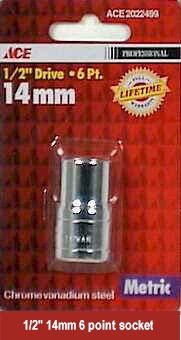
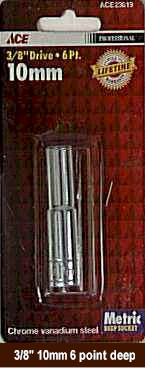
The most common drive tool is the Ratchet. I won't explain this tool any further because you already know what it is. In fact, this tool is used so much, it's worth having at least one good one in your garage. FACOM makes a real nice ratchet with 72 teeth (48 standard) which makes working in those tight spots easier. This has been one of my favorite additions to my tool collection. TIP: to put a ratchet in tightening mode, turn the control counter-clockwise, clockwise to loosen-- this is counter-intuitive, but remembering this tip will keep you from testing the direction of the wrench every time you use it.
 |
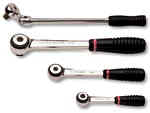
FACOM 1/2" 72-tooth Palm Control Ratchet $36.95 Griot's Garage |
Adapters are available to convert your drive sizes, for example I have a micro-torque wrench and an air ratchet which are 3/8" drive, to use my 1/2" sockets with these tools I use a 3/8" to 1/2" adapter. Extensions make getting at those hard-to-reach fasteners possible. Having several different lengths is a good idea like: 3", 5" and 10" for starters. Universal joints and wobble extensions are not used often, but come in handy--especially working with the exhaust system.
Spark Plug Sockets
ACE# 23637
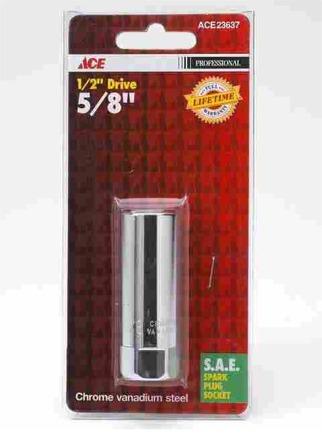
These are deep-well sockets with a rubber grommet in the base to hold the tip of
the spark plug for easy removal and installation
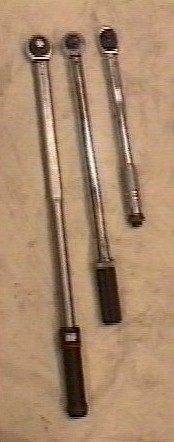
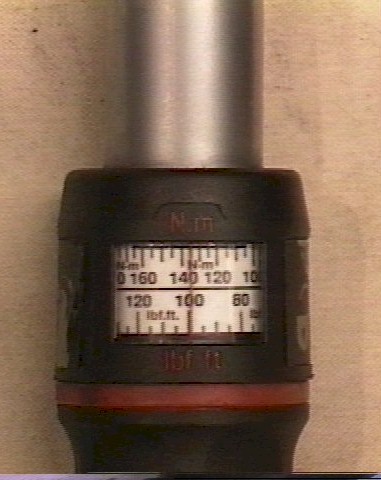
Griot's
Garage Wrench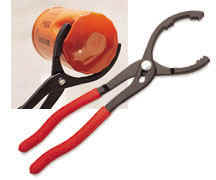 |
|
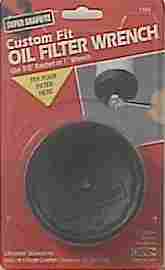 |
Feeler Gauge
www.snapon.com PN:FB335

Jacks
Lincoln W93642, Lift Range 3 3/4" -
20", 96 lbs
AI-Supply $288.00 (includes
shipping)
ACE Hardware (SKU# 8098659 ~$299.00)
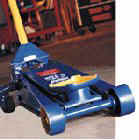
Fasteners
metric vs. us, coatings for NSX
Crush Washers

Crush washers are used in various places on NSX, like the oil drain plug,
transmission drain and fill plug, on either side of the fuel filter banjo bolts
and on either side of the brake line banjo bolts. These washers are made
of soft aluminum and when you torque a bolt down on them, they "crush"
a little bit and make a perfect seal between fasteners. These washers need
to be replaced for three reasons: 1) they only crush once, so after that they
won't have as good of a seal compared to new ones. 2) The suggested torque
recommendations assume that new washers will be used so the torque specification
allows and assumes this crushing will take place. And 3) the service
manual says so.
NSX Service Mat 07MAZ-SL0000A
This mat not only protects your paint, it looks really cool.
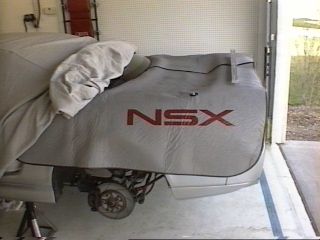
Liquid wrench, loc-tite, anti-seize
Safety tools
glasses
gloves
Clean up
soap
spray bottles